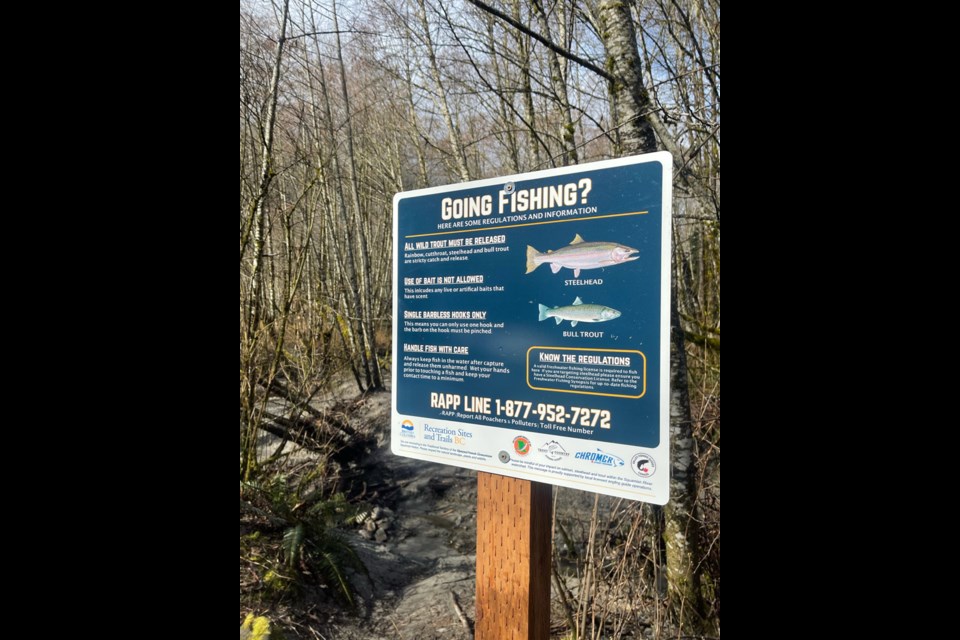There’s new educational signage aimed at anglers out in the Squamish Valley.
A total of 20 signs have been installed.
Guides in the valley spearheaded the initiative in conjunction with Recreation Sites and Trails BC and with the co-operation of Squamish recreation officer Alistair McCrone and the approval of Squamish Nation.
Yos Gladstone, a guide who had a role in designing the signs, told The Chief there has been a sharp increase in usage of the Squamish Valley, especially the Upper Valley, over the past five years.Stats from the Ministry of Forests, Lands and Natural Resource Operations show that on the Squamish Valley Forest Service Road there was an increase in traffic of about 21,000 in the last year (from 114,000 in 2019 to 135,000 in 2020). Going back to 2015, traffic was a mere 89,000, but since, the number has jumped significantly year-over-year ( about 94,000 in 2016; 105,000 in 2017 and 112,000 in 2018).
“With that has come an increase in angling pressure. Most anglers are very conscious of the resource, of local fishing regulations and caring for the fish we have in our local rivers. An aim of the signage and information is to provide a reminder to local anglers who enjoy the resource, but also to new visitors in the valley,” said Gladstone, who owns Chromer Sport Fishing.
“We want people who might fish here to know that there is a local angling community and guiding operations that really care about the fish and the area, and we want it to be well cared for and respected.”
The signs include basic regulations, fish identification and some reminders on safe fish handling.
“Safe fish handling is a big part of how conservation-minded guiding operations operate, and it is something the public has a better grasp of than ever before. It can be exciting when you finally catch a fish, and you want to take a picture, so the signs remind anglers of minimizing contact time and keeping the fish in the water as much as possible."
Clint Goyette, the owner of Valley Fishing Guides worked with Gladstone on crafting the signs and to get the signage approved, funded and installed.“Signage is all part of a greater plan to educate the public about the resource we have,” said Goyette.
The men were paid to put the signs up based on their knowledge of the Squamish Valley’s angling use, they said.
“Clint and I, along with some of our guides installed all the signage by hand. There’s a lot of rocks in the soil in the Upper Valley, but we were happy to do it as long as it helps protect the resource,” said Gladstone.
Some tips from the guides if you are planning on heading out fishing:
- All wild trout and steelhead must be released;
- Use of bait is not allowed anywhere on the Squamish River system;
- You can only use a single barbless hook, no barbed hooks or treble hooks;
- Know the regulations before you go: you can visit the BC Freshwater Fishing synopsis for Region 2 for more information;
- Handle fish with care;
- Be respectful of other anglers when on the river;
- Don’t drive your vehicle through spawning channels, this is an important time of year as salmon fry are beginning to grow;
- Leave no trace.
Fishing licenses expire on March 31, so it is time to purchase the 2021 to 2022 freshwater fishing license.
Those planning to target steelhead will need to include a Steelhead Conservation License.
To report a violation to the Conservation Officer Service contact the RAPP line call 1-877-952-7277.


